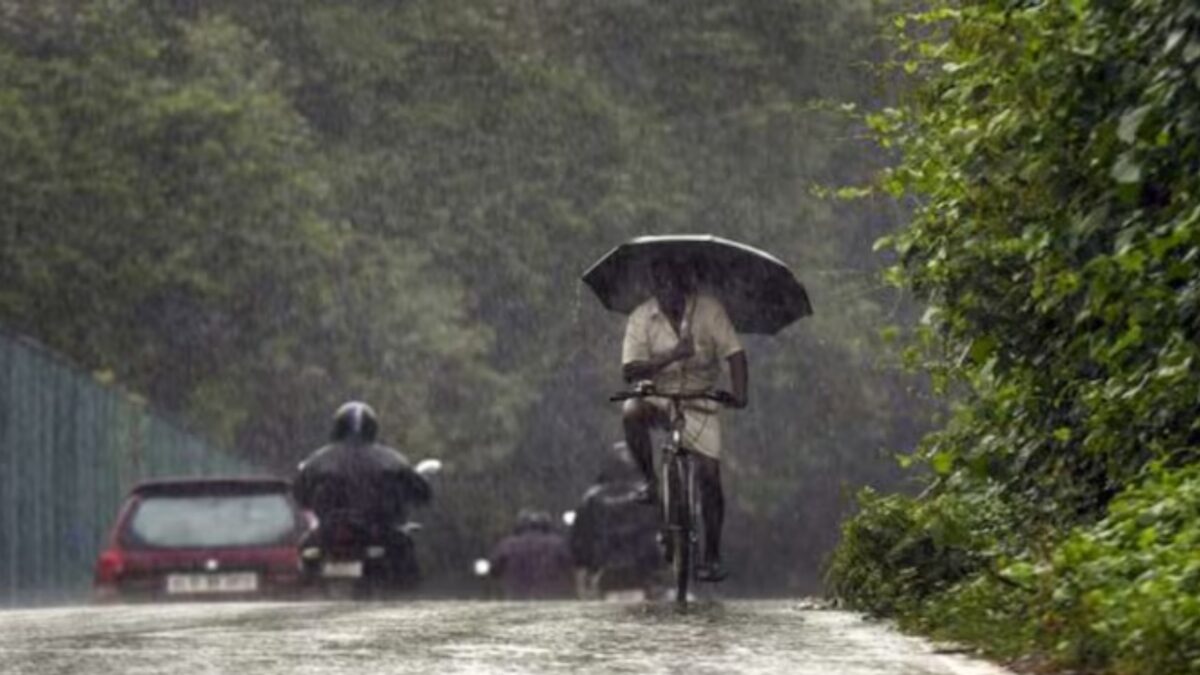Along with strong rains, the southwest monsoon arrived early on Thursday across Kerala and the northeastern states. The four-month monsoon season in India, which provides over 70% of the the nation’s annual precipitation, officially begins today. Usually on June 1, the monsoon crosses across. Kerala and spreads over much of India’s northeast by June. However, this year, the seasonal rains started in both South India and the northeastern states simultaneously. While Kerala experienced the onset two days earlier than usual, the northeast witnessed it six days ahead of schedule. This aligns with the IMD’s forecast range of May 31 (+/-4 days).
Additionally, much of the Lakshadweep region, most of the south Arabian Sea, a portion of the central Arabian Sea, and a few portions of south Tamil Nadu have been seen. The progression of the monsoon. The Northern Limit of Monsoon passes via Agartala and Dhubri in the east and Kannur, Coimbatore, and Kanyakumari in the south as of Thursday.
HOW IMD PREDICTS MONSOON
The monsoon typically arrives over Kerala around June 1st and extends across India by July 8th, based on records maintained by the IMD from 1970 to 2019. However, this timeline can vary annually due to meteorological fluctuations. To determine the onset date, the weather department monitors predefined conditions such as cloud cover, wind pressure, and moisture content. In 2016, the IMD updated this criterion to include daily rainfall data from 14 stations over. Kerala and neighboring areas, along with wind field and outgoing longwave radiation (OLR) over the southeast Arabian Sea. This aids in the assessment of cloud cover and moisture levels.
According to the criteria, a significant increase in rainfall over Kerala must be observed in at least 60% of the 14 designated stations. These stations encompass Minicoy, Amini, Thiruvananthapuram, Punalur, Kollam, Allapuzha, Kottayam, Kochi, Thrissur, Kozhikode, Thalassery, Kannur, Kudulu, and Mangalore. If rainfall of 2.5 mm or more is recorded for two consecutive days at these stations, the IMD can declare the onset of monsoon over Kerala on the second day. Additionally, the IMD considers. The establishment of large-scale monsoon flow and the extension of westerlies up to 600 hPa as necessary criteria. Satellite images assess cloud cover along the coast, along with water vapor imagery to evaluate moisture incursion levels.
The weather department announced on Thursday that considering the increased cloud cover over with the recent conditions observed, including increased cloud cover over the Southeast Arabian Sea. With the extension of westerlies up to 4.5 km above mean sea level, and widespread rainfall over Kerala in. The past two days, the Southwest Monsoon has been declared to have set in over Kerala on May 30. The IMD operationally determines. The onset and progress dates of the monsoon for various regions and states. , relying on subjective criteria such as sustained increases in rainfall over several days and related changes in atmospheric circulation features.
MONSOON NORMALLY COVERS INDIA BY JULY 8
Based on long-term records spanning from 1970 to 2019, the monsoon typically covers the entirety of India by July 8, but this timeline can vary due to changing weather conditions. However, this year, the progress of the monsoon after June 15 and its arrival over Northwest India may be slower than usual.
Also Read Share Market Update: Sensex, Nifty Slightly Up Despite Volatility; IT Stocks Weighing Down
According to IMD Chief M. Mohapatra, there is an expectation of reduced rainfall over certain parts of Northwest India in June, including Jammu and Kashmir, Himachal Pradesh, parts of Punjab, Haryana, and Uttar Pradesh. Consequently, temperatures are likely to remain high during both day and night, with an increased likelihood of heatwaves. Additionally, the onset of the monsoon will lead to higher humidity levels. The IMD may provide updates to this forecast over the next two weeks.
Typically, the monsoon arrives in india reaches Mumbai and Kolkata around June 11, and advances over Udupi, Karnataka by June 4.
This year monsoon arrives in india, the IMD predicts normal to above-normal rainfall across most parts of the country, with some exceptions in the northeastern states, as well as the northern regions of Jammu and Kashmir. Himachal Pradesh, and Uttarakhand. Additionally, several areas of Odisha, southern Gangetic West Bengal, and. The southern parts of Jharkhand and Chhattisgarh may experience deviations from the norm in terms of rainfall patterns.






